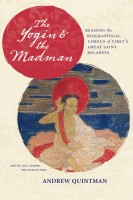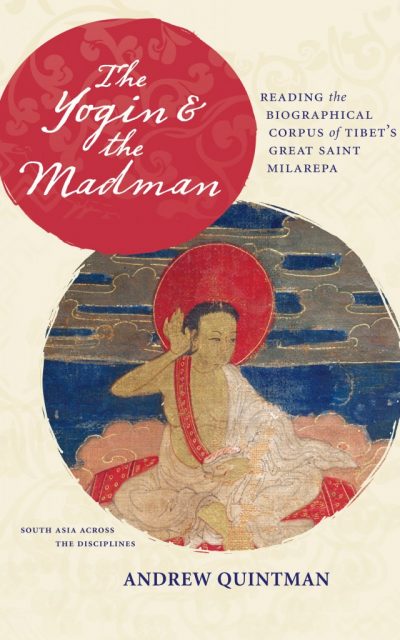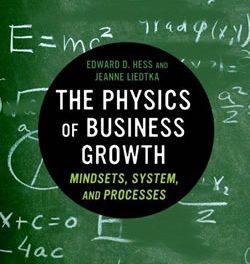 Author: Andrew Quintman, PhD
Author: Andrew Quintman, PhD
Publisher: Columbia University Press – 314 pages
Book Review by: Laxmi Chaandi
In this book, Andrew Quintman tells the story of the great Buddhist poet and saint Jetsun Milarepa (the eleventh-century ‘Lord of Yogins’) who lived between 1040 and 1123. One of his biographers Tsangnyon Heruka (1452-1507), the “Madman of Western Tibet,” wrote of Milarepa as a model of virtuosity in the Himalayan region.
This book grew out of the author’s fascination – about 20 years ago – with the many aspects of the life of Milarepa, who was widely revered and written about in Tibet, subsequently decided to study the life of the yogin beginning at the University of Michigan, and later around the Himalayas by seeking and receiving a Fullbright-Hays doctoral dissertation fellowship to spend a year in Nepal.
Of Milarepa’s life and his profound influence on his milieu, the author describes it as “a story that has been told in numerous forms: inscribed by authors, adapted by dramatists, illuminated by artisans, and proclaimed by wandering bards. It is a narrative that has become ingrained within the Tibetan religious and cultural landscape, a key element to the entity known as Tibetan Buddhism.” Milarepa indeed engendered the birth of a religious tradition and greatly influenced the development of Buddhism.
As part of the work on his dissertation, Quintman examined the collections of literature spanning over a period of nearly 400 years.
The material in this book has been organized into six chapters preceded by an Introduction and ending with an Epilogue
- Earliest Sources: A Biographical Birth
- Proto-Lives: Formations of a Skeletal Biography
- Biographical Compendia: Lives Made Flesh
- A New Standard: Tsangnyon Teruka’s Life and Songs of Milarepa
- The Yogin and the Madman: A Life Brought to Life
- Conclusions
In his Introduction, Quintman informs us that it was the tantric master Heruka whose version of Milarepa’s life and songs written in 1488 that set the “authoritative record of the yogin’s deeds.” Few other Tibetan literary works have “attracted the attention or the universal acclaim” as Heruka’s, he points out.
In his Conclusions, Quintman writes that his book – essentially an investigation of Milarepa’s biographical \tradition – has three broad goals:
- To turn away from the kernel/shell paradigm that characterized some early studies of religious biography and has continued to dog readings of the yogin’s life story
- To move beyond the rote mining of Tibetan biography for historical data
- To pay closer attention to the literary qualities of the corpus, its production, dissemination, reception, and inter-textual relationships.
Andrew Quintman’s book, based on field work and a dissertation, on the life of the renowned poet and saint Milarepa – who had a profound influence on the development of Buddhism – is an important contribution to the study of Tibetan literature.
Carol E.H. Scott-Conner, MD, PhD, MBA is Professor of Surgery in the Department of Surgery at the University of Iowa Roy J. and Lucille A. Carver School of Medicine in Iowa City, Iowa







